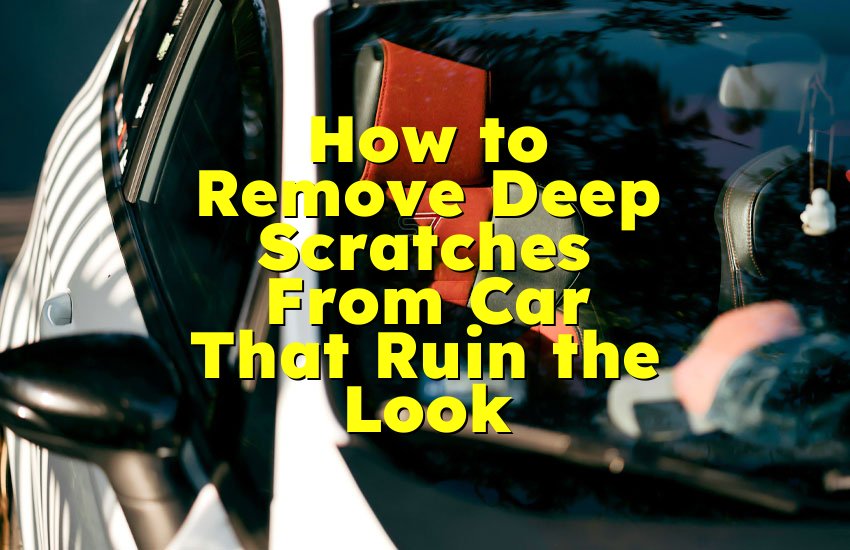As an Amazon Associate, I earn from qualifying purchases at no extra cost to you.
Why Your Seatbelt Won’t Click: Common Causes and Quick Fixes
You're driving along, and suddenly, your seatbelt won't click into place. It's a common problem, but it can be really annoying. Whether you're on a long trip or just heading to the store, a seatbelt that doesn't work is a big hassle. In this post, we'll look at why your seatbelt might not be clicking and how to fix it. Let's get your seatbelt working so you can drive safely and comfortably again!
Common Causes of Seatbelt Won’t Click
Dirty or Blocked Latch
A common issue is a dirty or blocked latch. Dirt, food crumbs, or small debris can accumulate in the latch over time. This buildup can prevent the latch from engaging properly, causing the seatbelt to fail to click into place.
Misalignment
Misalignment between the seatbelt latch and the receiver can also be a cause. If the latch is not perfectly aligned with the receiver, it may not click in. Misalignment can occur if the seat moves or if the latch or receiver is damaged.
Broken Parts
Broken parts are another potential cause. If the latch or receiver is cracked or damaged, it can affect how well the seatbelt clicks into place. Physical damage to these components can prevent proper engagement and make it difficult to secure the seatbelt.
Faulty Mechanism
A faulty mechanism within the seatbelt system can also be to blame. If the internal parts of the latch or the retractor mechanism are worn out or malfunctioning, the seatbelt may not click into place correctly. This often requires professional repair or replacement of the faulty components.
Taking care of your seatbelt is important for your safety. Regular maintenance and quick attention to issues can help keep your seatbelt working properly.

How to Fix a Seatbelt That Won't Click
If your seatbelt won't click into place, it's important to fix it as soon as possible. Here's a detailed guide to help you with each step.
Check the Seatbelt Buckle
First, examine the seatbelt buckle. This is the part where the seatbelt clicks in. Over time, dirt, dust, or small bits of debris can get into the buckle and cause problems. To clean it, start by gently brushing the buckle with a small brush or a soft cloth.
You can also use a toothpick to carefully remove any dirt from inside the buckle. Be very careful not to damage any parts while cleaning. Sometimes, a bit of compressed air can help blow out particles stuck inside.
After cleaning, check if the buckle looks clear and free of debris. Then, try inserting the seatbelt latch again to see if it clicks into place. If the buckle was dirty, this simple cleaning might fix the issue. If not, you'll need to move on to the next steps to find out what's wrong.
Inspect the Seatbelt Latch
The seatbelt latch is the part that goes into the buckle. It's important to inspect it closely. Start by checking if the latch is bent or damaged. Sometimes, the latch can get warped from regular use or from being dropped. If you see any noticeable damage, the latch might need replacing.
Additionally, check if the latch fits properly into the buckle. If it feels loose or wobbly, it might not click in correctly. You can also try adjusting the latch slightly to see if that helps it fit better. If the latch is damaged or doesn't fit properly, it's best to get a new one.
Seatbelt latches are usually easy to replace, but if you're not sure how to do it, you might need help from a professional. Replacing a damaged latch is important for ensuring your seatbelt works correctly.
Look for Obstructions
Sometimes, the problem with the seatbelt not clicking can be caused by obstructions. Check if there's anything blocking the seatbelt's path. Look around the seatbelt area to see if there are any objects or parts of the seat that might be in the way.
For example, check if the seat is in the wrong position or if there are any items stuck near the buckle. Sometimes, moving the seat or adjusting its position can help the seatbelt fit better. Make sure there is nothing preventing the seatbelt from moving smoothly.
If you find any obstructions, carefully remove them and then try using the seatbelt again. Ensuring the seatbelt can move freely is essential for it to click into place properly.
Test the Seatbelt
After cleaning the buckle, inspecting the latch, and checking for obstructions, it's time to test the seatbelt. First, make sure everything is in place and that there are no loose parts. Next, try to insert the seatbelt latch into the buckle.
Push it in firmly and see if it clicks. Listen for a clear, audible click, which means the seatbelt is securely fastened. If the seatbelt still won't click, try adjusting the position of the seatbelt or the latch. Sometimes, slight adjustments can make a big difference.
If the seatbelt still doesn't click after these tests, it might indicate a more serious problem. In such cases, it's important to get the seatbelt system checked by a professional to ensure it is safe to use.
Visit a Mechanic
If you've followed all the steps and the seatbelt still won't click, it might be time to visit a mechanic. A professional can inspect the entire seatbelt system to find any issues that you might have missed. They have the tools and expertise to diagnose problems accurately. If any parts are broken or need replacing, the mechanic can handle those repairs.
I hope this guide helped you understand why your seatbelt might not click and what you can do about it. Remember, a seatbelt that doesn't work can be a safety issue. If these tips don't fix the problem, it's best to see a professional. Keeping your seatbelt in good shape is important for your safety.
Questions in Your Mind
Is it Normal for a Seatbelt to Click Harder After Cleaning?
It is not unusual for a seatbelt to click more smoothly after cleaning. Cleaning the buckle and latch can remove debris and dirt that might have been causing the problem. However, if it still feels hard to click, further inspection may be needed.
Can a Seatbelt Locking Mechanism Cause Clicking Issues?
Yes, the seatbelt locking mechanism can cause clicking issues if it is malfunctioning. The locking mechanism helps secure the seatbelt in place. If it is not working properly, the seatbelt might not click or stay securely fastened.
Do I Need Special Tools to Fix a Seatbelt That Won't Click?
You generally do not need special tools to fix a seatbelt that won't click. Basic tools like a brush or a toothpick for cleaning are usually sufficient. However, for more complex issues or repairs, a mechanic might use specialized tools.
Is It Safe to Use a Seatbelt With a Slightly Bent Latch?
Using a seatbelt with a slightly bent latch is not recommended. Even minor damage can affect the seatbelt's performance and safety. It's best to have a bent latch inspected and replaced by a professional if needed.
Can Extreme Temperatures Affect the Seatbelt's Function?
Yes, extreme temperatures can affect the seatbelt's function. High heat or cold can cause materials to expand or contract, which might impact how the seatbelt clicks or fits. If you suspect temperature has affected your seatbelt, check it carefully or consult a professional.
Do I Have to Replace the Entire Seatbelt System If Only the Buckle Is Broken?
Not necessarily. If only the buckle is broken, you may be able to replace just the buckle. However, if there are other issues or if the seatbelt system is older, a full replacement might be recommended for safety.
Is It Possible for a Seatbelt to Click in Only One Position?
Yes, it is possible for a seatbelt to click in only one position if it is misaligned or if there is a problem with the buckle. Ensure that the seatbelt and buckle are properly aligned and functioning to allow secure clicking in any position.
Can Regular Maintenance Prevent Seatbelt Clicking Issues?
Yes, regular maintenance can help prevent seatbelt clicking issues. Cleaning the buckle and latch regularly, checking for obstructions, and inspecting the seatbelt for wear and tear can keep it functioning properly and reduce the likelihood of problems.
Do I Need to Test a Seatbelt After Repairing It?
Yes, you should test the seatbelt after repairing it to ensure it clicks securely and functions correctly. Testing it helps confirm that the repair was successful and that the seatbelt will work properly in a real driving situation.
Can a Seatbelt Click Issue Be Related to Airbag Problems?
In some cases, a seatbelt clicking issue might be related to airbag system problems. The seatbelt and airbag systems are connected for safety. If there's a problem with one, it might affect the other. Have both systems checked by a professional if you suspect a connection.











